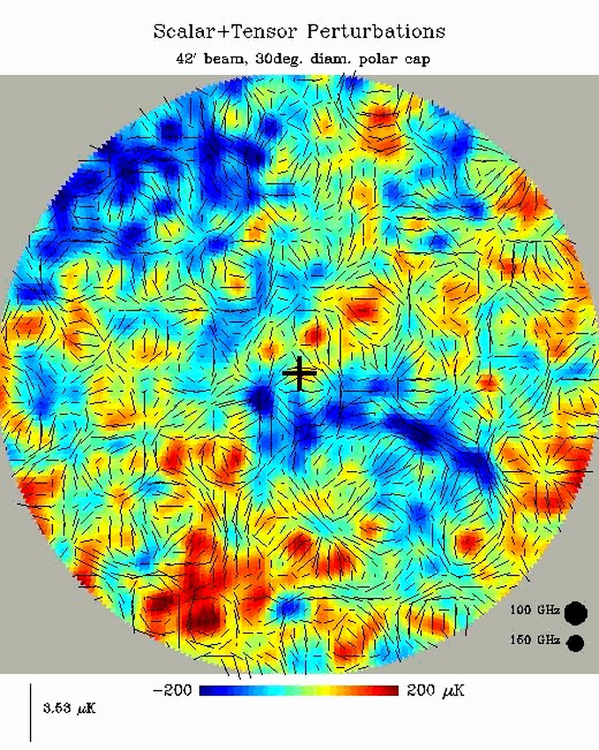
 Credit: BiCEP Team
Credit: BiCEP Team
Our Paradoxical Universe
The origin of the entire Universe is an event colloquially (and sometimes derisively) known as the "Big Bang". The story is fairly familiar: all matter and energy came into existence some 13.82 billion years ago. Since that time the Universe has been expanding (in sometimes surprising ways). This standard model seems a bit weird when you think about it, but the well-studied relic radiation of the Big Bang, the "3 degree Background" is rather firm evidence that the Big Bang did indeed happen. The current temperature of the entire Universe is about 3 degrees above absolute zero, and the Universe must have been much hotter in the past. But the very uniformity of the temperature of the Universe is a puzzle - how did regions of space, separated by such immense distances that they could not possibly communicate with each other, come to have almost exactly the same temperature? To address this and other problems, a physicist named Alan Guth postulated the rather bizarre theory of an inflationary Universe: that a small portion of the Universe underwent an exponential expansion right after the big bang, in which the scale of the Universe grew an by an enormous factor - one nonillion (1030) - in a hundred-thousandth of a nonillionth (10-35) seconds. It's this inflated Universe we find ourselves living in. There could even be other inflated Universes beyond our own, a multiverse of Universes with perhaps different physical laws and cosmic histories. How inflation could possibly happen is unclear, but this extraordinary event should have left detectable marks on the Universe somehow. Astrophysicists believe that, during the inflationary epoch, gravity waves generated by the early Universe and amplified by inflation would distort the orientation of cosmic microwave background photons in a predictable and detectable way. Astrophysicists using sophisticated detectors, like the Background Imaging of Cosmic Extragalactic Polarization (BICEP) experiment in Antarctica are hoping to find evidence of this inflationary imprint. Will they succeed? Maybe we'll know shortly...
Published: March 17, 2014
<
HEA Dictionary ● Archive
● Search HEAPOW
● Other Languages
● HEAPOW on Facebook
● Download all Images
● Education ● HEAD
>

Each week the HEASARC
brings you new, exciting and beautiful images from X-ray and Gamma ray
astronomy. Check back each week and be sure to check out the HEAPOW archive!
Page Author: Dr. Michael F. Corcoran
Last modified Monday, 26-Feb-2024 17:34:29 EST


